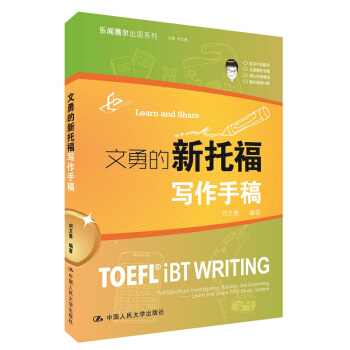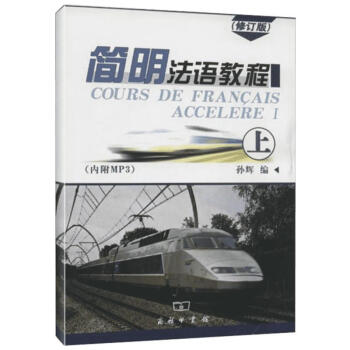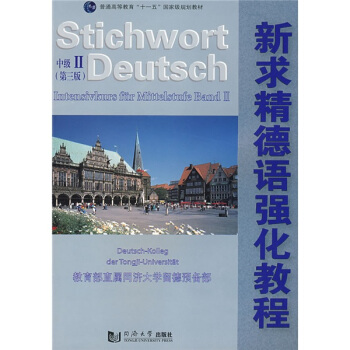

具体描述
内容简介
由叶建芳和孙红星编著的《会计英语(第4版)》分为九章,一至第三章是对会计的性质以及会计信息产生过程的叙述;第四至第八章是关于资产、负债和所有者权益的确认、计量和报告;第九章是关于有关企业经营活动对现金流量表的影响,以及如何编制现金流量表。为了满足读者需要,最后附录中有主要报表的中英文对照表。目录
1 An Introduction to Accounting1.1 Accounting is an Information System
1.2 Forms of Organization
1.3 The Framework for the Preparation and Presentation of Financial Statements
1.4 Understanding of Financial Statements
Balance Sheet
Income Statement
Statement of Owner's Equity Statement of Retained Earnings
Cash FlowStatement
1.5 Accounting and its Profession
1.6 Accounting Elements and Using the Accounting Equation
What is Accounting Equation?
Effects of Transactions on the Accounting Equation
1.7 Ethics in Accounting
Some Basic Ethical Standards
Demonstration Problem
Vocabulary
Self-Test Questions
Discussion Questions
Exercises
Problems
Mini-Case
2 Recording Transactions
2.1 Economic Events and Business Documents
……
精彩书摘
America Online, Inc. (AOL) provides Internet access to millions of subscribers throughout the world. AOL is listed on the New York Stock Exchange (NYSE) and is registered with the Securities & Exchange Commission (SEC) pursuant to the Securities Exchange Act of 1934. During its fiscal years ended June 30, 1995 and June 30, 1996, AOL undertook extensive advertising efforts to rapidly expand its customer base. These efforts included distributing millions of computer disks containing AOL start-up software and paying computer equipment manufacturers to bundle the startup software with their computers. The company capitalized the expenditures as an asset, " Deferred Membership Acquisition Costs (DMAC) " ,thus defemng the advertising costs as an asset rather than an expense. Effective July 1, 1995, AOL changed the period over which it amortized these acquisition costs from twelve and eighteen months to twenty-four months, resulting in an increase in reported net income of $ 48:106 million. As a result of this accounting change, AOL reported net income of $ 30 nullion for the fiscal year.ended June 30, 1996, rather than a loss of $ 18 million. This aggressive accounting method allowed AOL to report profits for six of the eight quarters during fiscal 1995 and 1996. According to the SEC, if AOL would have expensed the costs, as required under generally accepted accounting principles (GAAP) , they would have reported losses in each of the 8 quarters in fiscal years 1995 and 1996. By September 1996, these deferred advertising costs reached $ 385 million. Finally, in October 1996, AOL announced that it wrote-off the $ 385 million balance of capitalized DMAC at September 30, 1996 because the company believed "it no longer has an adequate accounting bases to support recognizing deferred subscriber acquisition costs as an asset," and would expense all such costs from October 1, 1996 forward. The write-off resulted in a.reported net loss of $ 354 million for the three months ended September 30, 1996 on revenues of $ 350 million.
On May 15, 2000, AOL agreed to pay a $ 3.5 million penalty and restate its operating results from 1995 and 1996 to reflect the proper accounting treatment of the advertising costs tosettle Securities and Exchange Commission (SEC) allegations that the Internet provider improperly accounted for its advertising and marketing costs during 1995 and 1996. Citing Statement of Position 93-7 , the SEC argued that AOL could not properly capitalize the costs as assets unless they could demonstrate that, based on past experience, the probabie future revenues from new customers will exceed future costs, and that the historical evidence upon which it bases its recoverability analysis is relevant and reliable. The SEC concluded that AOL could not reliably satisfy these requirements given the unstable business environment and 'highly competitive nature of the Intemet marketplace.
Answer the following questions:
1. AOL's expenditures for the direct cost of providing software to potential customers and bundling the software with original computer equipment were classified for accounting purposes as "deferred subscriber acquisition costs," a form of marketing cost. Are advertising expenditures generally treated as an expense for the current period or deferred as an asset for accounting purposes?
2. AOL capitalized a portion of subscriber acquisition costs incurred during fiscal 1995 (6/30/95) and 1996 (6/30/96) as a long-term intangible asset. Indicate the difference between this type of cost compared to a tangible asset, such as property and equipment.
3.1ndicate how the cost of intangible assets is expensed.
4.1ndicate the amortization method that is generally used to allocate the cost of intangible assets.
5. US GAAP requires capitalization of expenditures that have reliable evidence of expected future benefits extending beyond the current accounting period. Expenditures that give rise to expect future benefits should be capitalized as an asset rather than expensed in the period incurred. Indicate the future benefits that AOL expected from these subscriber acquisition costs. Also, indicate the number of periods over which these benefits would likely be realized.
6. The period over which AOL amortized subscriber acquisition costs initially was twelve and eighteen months. Effective July 1, 1995, when these total deferred costs on AOL' s balance sheet was $ 26 million, the Company began amortizing the capitalized costs over a twenty-four month life. As of September 30, 1996, AOL again changed accounting methods. From the first quarter of fiscal year 1997 (9/30/96) to the present, subscriber acquisition costs are written off as an expense in the period of incurrence. Indicate how the estimated useful life of an intangible asset is determined.
7. Explain the similarity and differences in the accounting for amortization and depreciation.
8. AOL wrote off the unamortized balance of $ 385 million in deferred subscriber acquisition costs in the first quarter of fiscal year 1997 ( September 30, 1996) resulting in earnings for that quarter of $ 19.0 million becoming a'reported loss of $ 353.7 million. Indicate the business conditions that would cause a company to expense the entire cost of an intangible asset in one accounting period.
9.1ndicate how AOL will likely report. the $ 3.5 million civil penalty in its fiscal year 2000 (6/30/00) financial statements.
10. AOL agreed to pay a $ 3.5 million civil penalty and treat customer acquisition costs as expenses in the period in which they were incurred without admitting any wrongdoing. As a result, AOL will restate historical results from 1995 to 1996 to reflect that changed treatment. Do you think that the settlement of the charges brought by the SEC will have a significant impact on the company's future operations?
……
前言/序言
用户评价
从教学法的角度来看,这本书的难度设置是循序渐进,但绝不失挑战性。它不是那种“保姆式”的教学材料,它假设读者已经具备了一定的基础英语能力,然后才开始对其进行“专业化”的提纯和雕琢。它没有花费大量篇幅去教授基础语法,而是直接将学习者置于高度专业化的语境之中,通过大量的真实案例和模拟对话,迫使学习者去适应这种高密度的专业信息输入。这种“沉浸式”的学习策略非常有效,它迫使我主动去查询那些模糊不清的表达,去内化那些复杂的句式结构。这本书的价值不在于让你“学会”英语,而在于让你“用”会计的语言思维去组织和表达复杂的财务逻辑。阅读过程中,我经常需要停下来,仔细对比书中提供的“地道表达”和自己本能写出的“直译版本”,这种对比训练极大地提升了我的语感,让我能更自然、更具说服力地进行书面和口头沟通。这确实是一本值得投入时间去精读的工具书。
评分说实话,我之前尝试过几本声称是“专业英语”的书籍,但很多都流于表面,要么是简单的词汇堆砌,要么就是将中文的财务概念硬生生地翻译成英文,读起来非常拗口,完全不符合实际工作场景的交流习惯。这本《会计英语(第4版)》给我的感觉完全不同,它仿佛是一位资深注册会计师亲自为你“定制”的语言训练手册。它的语言风格非常贴近实战,举例都是从实际的财务报表附注、董事会会议纪要中截取出来的,真实感极强。比如,书中对“流动性(Liquidity)”这个概念的解释,就不仅仅停留在“容易变现”这种简单定义上,而是通过一系列包含不同情境的句子,展示了在流动性覆盖率(LCR)计算和现金流预测中,如何精准使用相关的英语表达。我尤其欣赏它在讲解法律和监管术语时的严谨性,那些关于合规(Compliance)和披露(Disclosure)的段落,措辞精准到每一个逗号都似乎经过了深思熟虑。读完这些部分,我感觉自己不再是只会翻译的“翻译机器”,而是真正能用英语的逻辑思维去理解和撰写财务文件的“专业人士”了。
评分这本书的封面设计得非常典雅,那种深邃的蓝色调搭配着金色的字体,一看就是那种沉稳、专业的学术书籍。我拿到手的时候,首先被它的装帧质量所吸引,纸张手感厚实,印刷清晰,没有任何异味,这点对于长时间阅读的专业书籍来说太重要了。内容方面,这本书的结构逻辑性很强,它似乎并不满足于简单罗列术语,而是着力于构建一个完整的会计英语交流框架。我特别欣赏它在处理复杂概念时所采用的对比分析法,比如,它会把美国通用会计准则(US GAAP)和国际财务报告准则(IFRS)中的关键术语放在一起进行细致的辨析,这对于我们这些需要和国际业务打交道的人来说,简直是福音。翻阅前几章,就能感受到作者在语言选择上的精妙,他们似乎非常懂得,在正式的财务报告和日常的邮件沟通中,应该使用何种语态和词汇的细微差别。这本书更像是给一个初入跨国财务领域的新手提供的“语言地图”,清晰地标示出哪些词汇是陷阱,哪些表达是地道的。我期待着深入研读后续章节,尤其关注其中关于审计报告和税务文件解读的部分,相信它能极大地提升我专业英语的精度和效率。
评分这本书的编排方式打破了我对传统教材的刻板印象。它似乎没有采用那种传统的“单元—练习—测试”的线性结构,而是更侧重于“主题模块化”的学习路径。比如,它可能将“资产负债表”相关的英语表达拆分到好几个不同的章节中去讲解,穿插在关于“估值”、“风险管理”等宏观主题的讨论里。这种看似分散,实则相互关联的布局,反而能让我更好地理解会计语言的动态性和适应性。举个例子,关于“折旧(Depreciation)”的讨论,它可能首先在一个介绍固定资产核算的章节中出现其标准说法,然后在后续讲解税务规划时,又会引入与“加速折旧”相关的特定法律术语。这种设计迫使学习者必须跳出孤立的词汇记忆,转而关注语境对词义的影响。对我这种喜欢从全局构建知识体系的学习者来说,这种非线性的深入挖掘方式,是真正能让知识点“活”起来的关键。这套书的价值,就在于它教会我们如何“思考”而不是仅仅“记忆”会计英语。
评分我花了不少时间研究这本书的参考资料和附录部分,这部分内容简直是宝藏。很多教材会敷衍地罗列一些缩写和惯用语,但这一版似乎做了大量的调研工作。它不仅提供了标准的行业缩写(如EBITDA, FCF),还深入探讨了在不同国家或地区使用这些缩写时可能出现的细微偏差和理解误区。更让我惊喜的是,它似乎还收录了一些新兴的或正在演变的财务报告语言,比如与ESG(环境、社会和治理)报告相关的专业术语及其在法律文本中的标准表述。这对于身处快速变化金融环境中的专业人士来说,至关重要,意味着这本书具有相当的前瞻性,而不是仅仅停留在对旧有知识的复述上。每一次翻阅附录,我都会发现一些以前工作中忽略掉的细节,这些细节在关键时刻,往往能决定一份文件的专业度和可信度。这种对细节的极致追求,体现了编者对会计英语规范性的高度尊重。
评分挺好的 还没看。质量挺好。快递也很好
评分现金流量表
评分现金内部控制的措施
评分送货很及时,很满意,一直支持京东!
评分1.7 会计职业道德
评分很好很不错~各种不错~
评分下学期的课本,老师选的,应该还不错吧
评分1.1 会计是一个信息系统
评分还能有比这更破的新书吗?!呵呵!!
相关图书
本站所有内容均为互联网搜索引擎提供的公开搜索信息,本站不存储任何数据与内容,任何内容与数据均与本站无关,如有需要请联系相关搜索引擎包括但不限于百度,google,bing,sogou 等
© 2025 book.coffeedeals.club All Rights Reserved. 静流书站 版权所有









![围城 [Fortress Besieged] pdf epub mobi 电子书 下载](https://pic.windowsfront.com/10034039/574bde1fNd5b4273c.jpg)

![生活用语必备:越南语(中越英对照)(内赠MP3光盘1张) [Vietnamese Essential Phrase Book] pdf epub mobi 电子书 下载](https://pic.windowsfront.com/10056062/894fda80-66d6-4d60-b4c9-5dcc529ebdd3.jpg)

![现代西班牙语(第5册)(教学参考书) [Espanol Moderno] pdf epub mobi 电子书 下载](https://pic.windowsfront.com/10953935/3c0a6ac3-78ae-4a27-a431-9730f88c16d9.jpg)





![轻松英语名作欣赏:阿拉丁和神灯(小学版)(附光盘1张) [Aladdin and the Magic Lamp] pdf epub mobi 电子书 下载](https://pic.windowsfront.com/10035332/581072eaN581e188e.jpg)
